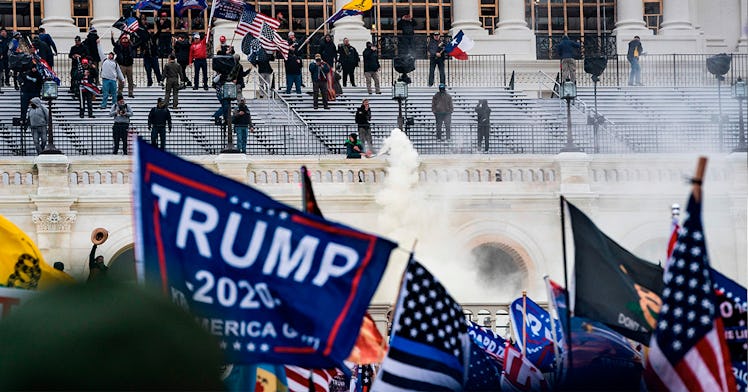How to Talk to Kids About President Trump and Impeachment
It's tough. Kids want a reassuring figure to be in power. But when political turmoil looms, they need a more subtle understanding.

President Trump’s four years in office have been marked by rolling controversy. And like it or not kids have been exposed to that controversy via television and radio news. In 2018, just two years into his administration, the president’s campaign was the subject of a special counsel investigation looking into election interference. That investigation ultimately led to indictments and conviction of some of the president’s closest allies. A year later, in 2019 the president was impeached by a Democratic House, and now just days before he leaves office Trump is facing impeachment again.
Sadly, children have been exposed to the political shitshow, and talk of impeachment or removal from office will likely freak them out. After all, kids — and we’re primarily talking grade school and younger here — have a notion of the presidency as a position of power but lack the command of civics to understand what’s going on.
For this, parents need tools. To talk about this historically unprecedented second impeachment to a kid, you also need to talk about both civics and current events — many of which are traumatic to kids right now. By now, many parents have had tough conversations with our youngest children in the procedural aftermath of the January 6 Capital insurrection. The riot, the incitement, and the parliamentary fallout and constitutional wrangling shine a light on the fact that neither me nor my kid’s teachers (priorities being what they are) are great at teaching civics. And, considering the ongoing chaos of contemporary presidential history, our kid could use a civics lesson. So I set out searching for teaching materials that would help.
Suffice it to say there are a lot of bad teaching tools out there when it comes to the American presidency, particularly for younger children. Some are just too simplistic to be of any use. A good example of the phenomenon? Scholastic’s read-along page “What Does the President Do?”, which devotes an inordinate amount of words to the pleasures of Air Force One. Other online teaching materials offer a dangerous lack of nuance, like the many lessons that suggest “the president is the leader of our country!” simply “hired” by the American people for the job. No discussion of checks and balances. No discussion of sharing power between branches of government.
Representative democracy is crazily complicated so it’s understandable that media for kids wouldn’t dive too deep on the stuff. Still, it’s worth making that effort — if for no other reason than no one knows what’s going to happen next politically and knowledge will make news reports less frightening to kids.
That’s why I’m here to fanboy the National Constitution Center’s “We the Civics Kids” materials, which do a fine job of bringing a simple constitutional perspective to the presidency. Of particular note is a downloadable PDF “magazine” featuring a smiley cartoon Lincoln. It is short, sweet, nuanced, and easily understood by a grade-schooler and it gets to the point swiftly.
But how do the documents examine presidential power? After reading through a short history of the constitution I reached this sentence regarding the founders: “They also decided on a leader who would share the power with the other two branches of government, the states, and We the People.” That’s exactly the sentence I wish I’d had in my pocket for my impromptu presidential dinner discussion.
Because that’s the point isn’t it? In all of this chaos, it’s important for children to know that the President shares power both with Congress, the judiciary, and us, the people. That’s a powerful bit of knowledge to carry around in your kid brain, regardless of your parents’ political beliefs. In acknowledging that the power is shared, the NCC materials offer a strong reassurance in the continuity of power: It’s always held by the American people. The president ceases to seem like a powerful leader operating in a vacuum or a chump that can be fired for hating brown people.
The beauty of the NNC’s material is that it is constitutionally based and, as such, bipartisan. The lessons can be embraced regardless of the level of panic, anger, or ease over the president’s current predicament. It’s an island of reason, perfect for kids to stand on, as the country shifts uneasily.
The only way it could be better is if it were updated. The materials were created during the 2012 election. In political years, that might as well be the last century. But while it would be nice to have modern references beyond Mitt and Obama, the core of the material is timeless. After all, it’s based on the constitution. If only my kid’s bus friend were a constitutional scholar.
This article was originally published on